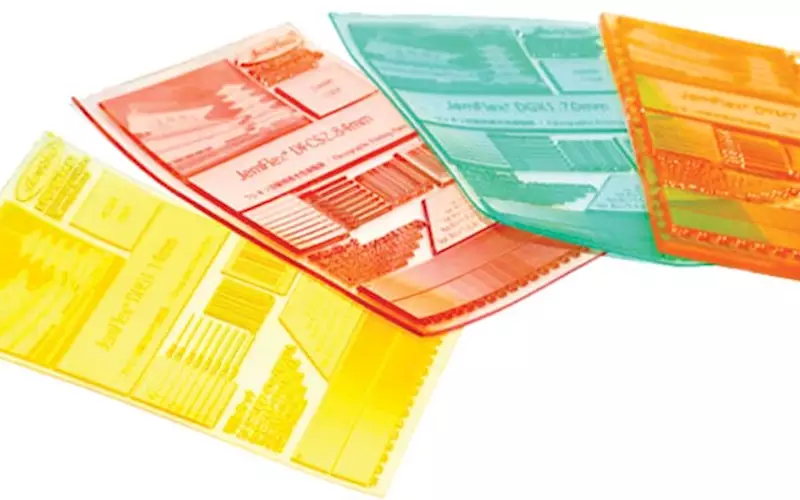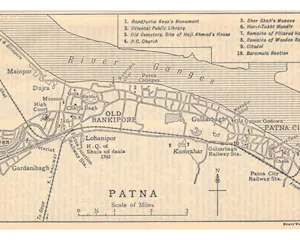Mumbai-based Lucky Graphics is trying to cement its place in the flexo market by positioning Japan’s Jemflex flexo plate as a viable alternative to top brands in Europe. Rushikesh Aravkar reports
When it comes to colour consistency, job after job, label after label the on-press controls can only achieve so much. Once all the base parameters are set to the same as last time, several variables still need to be manages. This is especially important when you are supplying to food and pharma markets as a “good manufacturing practice” – all variables impacting the final print need to be under constant monitoring.
But the plate performance should never vary – and once you are on press, the plate has to deliver the exact dot, one after the other. As flexography becomes more and more demanding, and its application basket broadens, choosing a right plate for a job is critical. With an exhaustive range of eleven different photopolymer plates, Japan’s Nihon Denshi Seiki has a tailored plate for every flexo application.
Mumbai-based Lucky Graphics, a known name in the graphic arts and flexo circles, has recently inked a deal with Japan-based Nihon Denshi Seiki, the manufacturer of Jemflex to supply the plates in India.
To begin, Jemflex is a portfolio of solvent-washable photopolymer plates for both analogue and digital platemaking workflows.
Rohit Sachdev, chairman, Lucky Graphics, says, “We offer three types of digital plates and eight analogue plates.”
Sachdev describes Jemflex plate as “a high-quality flexographic plate providing excellent ink transfer, smooth solids, uniform lay down and robust on-press performance.”
“The plates are flexible, highly resilient, dimensionally stable and uniform in thickness.”
Sachdev points to the plate’s versatility as a key attribute. He says, “Jemflex plates are designed to print on a wide variety of substrates, including flexible packaging, foil, film, paper, plastic bags, labels and envelopes.”
Plates have also become a factor of differentiation for printers to stand out among the competition.
Sachdev says, “They are looking for ways to increase their resolution capabilities as well as improve image consistency in order to match, or surpass, labels and other products produced by offset and digital printing. Label printers also seek to increase their plate life,” he says.
Sachdev underscores that it’s difficult to determine one type of plate being better than others. “It’s a tough question as there are so many plates for so many different applications,” he says. “The most popular plate in India is Jemflex GX plate with caliper of 1.14mm, 1.7mm, 2.84mm and 4.7mm. Printers like the dot gain control of this plate and it’s durability.”
Of course, selecting the right plate depends on the situation. “The various qualities are desirable depending on the print conditions, and the job specifications,” Sachdev points out. “Harder plates tend to be better for high line screens and fine detail, softer plates for applications where solid coverage is paramount.”
The basics
The Jemflex analogue plate consists of five layers – PET base film, adhesive layer, photo-sensitive polymer layer, slip-coat layer and top cover film.
Sachdev explains the process. “For the analogue system, the matte film is imaged separately and then applied to the surface of an analogue plate, covered with a vacuum sheet, and, with vacuum applied, exposed to the UV light. The final dots and lines on the plate are enlarged to some extent compared to dots and lines on the film, due to the deflection and refraction of light passing through the cover sheet, the imaged film, and the plate slip cover that stops the film sticking to the photopolymer. An analogue plate has a flat top dot structure with good support structure, for excellent on-press performance.”
In Jemflex digital plates, there’s a laser ablation layer in place of the slip coat layer. Sachdev says, “The black layer is then ablated using a high power laser imaging device, removing the black layer where image areas are required, and leaving the rest to be the mask for the non-image areas. The plate is then exposed in a normal exposure unit.”
This is followed by solvent-wash, drying and post-exposure to achieve complete photo curing by hardening the remaining polymer.
“The digital dot is sharper than the analogue dot and has lesser dot gain,” says Sachdev.
Sachdev emphasises that printers want their plates to last and also deliver print consistently.
He adds, “The printing plate is one of the most important tools in the entire print production workflow because it’s the only element that translates the information from pre-press to the printed substrate. So, Jemflex plates ensure very fine imaging, consistency in print production, and high resiliency.”
Specifications
Min size 600x840mm
Max size 1200x2032mm
Halftone dot 1~95% / 3~90%
Contact Rohit Sachdev, Lucky Graphics, vaishnav@bom5.vsnl.net.in
The alternatives
Asahi AFP
Asahi offers three variants of AFP analogue flexo plates and five variants of digital flexo plates. These plates boast of improved mechanical stability and excellent ink transfer behavior in combination with low highlight dot gain.
Contact Sunil Kokane, sunilk@technovaindia.com , www.technovaworld.com
DuPont Cyrel
DuPont Cyrel range of analogue solvent plates include four variants, namely, NOWS, UXL, DRC and TDR and eight variants of digital solvent plates, with low, medium and high durometer options.
Contact Prasenjit Das, Prasenjit.Das@dupont.com, www.dupont.com
Flint Nyloflex
Whether printing on film, foil, coated paper or self adhesive substrates, the Nyloflex printing plates provide consistent fine screens and vignettes and smooth solids on all commonly used substrates.
Contact Upal Roy, Upal.Roy@flintgrp.com, www.flintgrp.com
Macdermid MVP
MVP (Most Valuable Plate) is a medium durometer, analog sheet plate from MacDermid. This 50 durometer plate allows for faster press speeds and reduced bounce.
Contact Gary Lam (Hongkong), glam@macdermidga.com, www.graphics.macdermid.com














 See All
See All